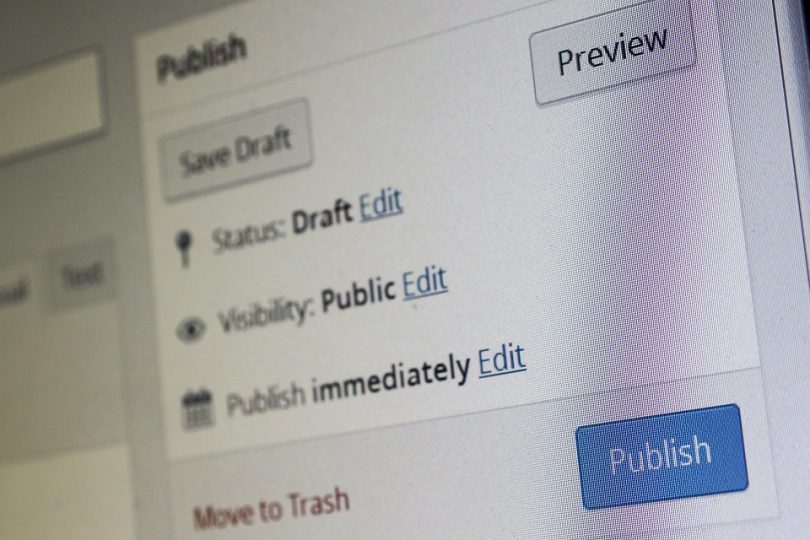If you own a website or blog, you often think about what new content to create. But did you know that it is also important to focus on your existing content? Having too many low-performing posts or pages on your website is not a good look for your business or Google. Did you know that old, too similar, or short content can drag your site down in the search results? A practice called content pruning can help you prevent this from happening.
Let’s take a look at it! Do you know a little about gardening? Content pruning is the same principle as hedge trimming. Cut off dry and dead branches so that healthy branches have room to grow. The same goes for your content!
What is content pruning?
Content pruning is a form of content maintenance on your website. It focuses on content that is not performing well. This could mean low traffic, low converting pages, pages with low or recurring content, or posts that are no longer relevant. The goal of content trimming is to get rid of those pages and (try to) display only updated, rich, and relevant content to users. It also has an added benefit: Google loves fresh, unique, and good content. So pruning your content is an SEO best practice.
Why should you trim your content?
Content trimming means removing low-motion content, so that other content has more room to shine. It improves the quality of your content and your website, which can improve your ranking. But there is more:
Most importantly, having quality content on your website also improves your users’ experience when browsing your site. You don’t want them to end up on pages about services or products you no longer offer, or outdated business information.
Even old content is often crawled by search engines and other bots. It costs money and energy resources: things you don’t want to waste! So please help them by removing pages that are not worth crawling.
This helps prevent content from becoming immutable: if you’ve been writing for a long time, you’re bound to create content similar to what you’ve written before. If you have many similar articles on a particular topic, it can be difficult for Google to determine which of your articles to rank for that topic. This can lead to lower ratings for that course.
Regular content pruning gives you more peace of mind as a site owner. Having a bunch of outdated content on your website can be a burden and you may lose everything you have. It gives you peace of mind knowing your users aren’t accessing outdated information, and you won’t miss out on business opportunities just because people land on the wrong page. This helps you focus on the things that matter to your business!
As you can see, content trimming is good for everyone. So how do you get rid of old and skinny content the smart way?
Content trimming process
There are several ways to do this. Here we will explain some ways:
Collect data and create an overview
Usually, most people start by creating an overview of your content and how it works. An excel file or a google spreadsheet should work. You can export the URLs of your pages and posts from Google Search Console or Google Analytics, along with some of the data you want to make decisions about. But you shouldn’t only consider Google Analytics data like page views, page value, or bounce rate. Other information to keep in mind:
For example, the number of external and internal links pointing to that post. Or if you share that post in your social media newsletter, do you know that it will lead to more shares, engagement, or even sales? If you haven’t shared it recently, it may not be visible in your data, so be careful!
There are SEO tools that can help with this process. For example, tools like Semrush, ahrefs, and ContentKing can crawl and/or audit your content and even make recommendations for you. When these tools are combined, they can take into account (some of) the above data in their recommendations on the subject.
Of course, you shouldn’t always take these automated recommendations for granted. As you create this page, you will have a better idea of what the goal of the page is and whether or not it will achieve that goal. However, these tools can help you identify underperforming content.
Objectives and standards
It’s good to have clear criteria for determining if a page is fit for purpose: Did you create it to rank? Find out if it ranks, keywords, position, and CTR. Did you do it to get attention for a product? ObOnef the most important things to check is how that page or page value is converted
So for each page, think about: What is the purpose of this page, and does it meet the criteria you set for that purpose? If it doesn’t hit the target, should I optimize the page or have an alternative page that does? Or is this goal still relevant to my business?
If you have a lot of content and work with a spreadsheet, this exercise can be overwhelming. In this case, it may be helpful for you to focus on specific topics that are essential to your work. Make sure you have all the content of a particular topic in one spreadsheet and information about how that content is performing. This will help you trim your website into smaller steps – more small achievements to celebrate! It may even lead to better results sooner on that specific topic. This approach also helps resolve content parsing issues.
Content Trimming: Optimize, Delete, or Hide?
But how do you decide what to do with the post? However, take a look at the purpose of the page. Then decide whether to enhance, delete or hide. Here are some examples to make it easier:
to improve
The content you forgot but it has great potential. You wrote a quality blog post a while ago but forgot about it due to other priorities. It may be ranked on the second page for the class you want to rank for. This is the time to update and improve it, add the latest developments in this topic or enrich it with great examples, photos, or videos.
And don’t forget to include internal links from the related content. In the third step, our SEO practice provides suggestions of which pages to link to, which is very handy. And if you are proud of your work, share it again on social media and in your newsletter!
Delete
Old alerts, for example, events or topics that were previously relevant but no one cares about anymore, or posts or pages on topics you wrote richer and more recent content about. In the latter case, you may want to check if there are any valuable parts of the article that you want to be removed. Incorporate them into your favorite article before you start sculpting with impatience!
And if you delete a post, don’t forget to redirect the URL to a better equivalent. Otherwise, your audience will end up on a page that doesn’t exist, which is a frustrating and frustrating experience. Fortunately, our exercise asks you what to do with the URL when you delete a page so you don’t forget.
Hide
A landing page designed for a specific audience that can compete with a more general post on the same topic in search engines. And you want to keep it because you want to target a segment of your audience to it. or a recurring annual sales publication. You may want to hide this type of content from search engines so as not to confuse them. If you choose noindex in the exercise, Yoast SEO will add a no-index tag to the page so that it does not appear in search results.
Having trouble deciding whether to improve, remove, or hide the content? Check out our post on whether you should update or delete content on your si when you clean it








Leave a Comment